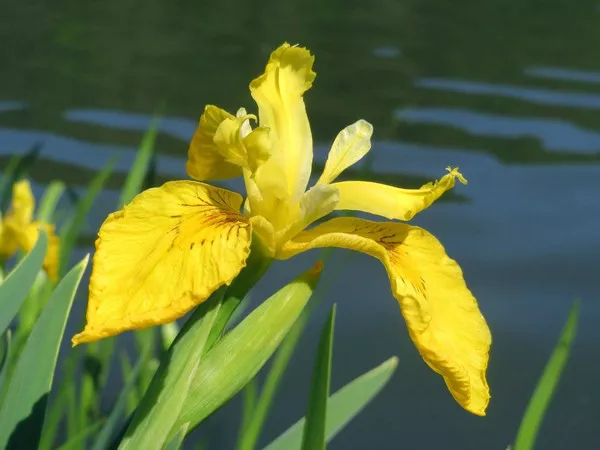Marigolds, with their vibrant colors and pleasant aroma, are more than just beautiful ornamental flowers in the garden. These cheerful blooms also serve as natural pest repellents, protecting other plants from unwanted insects and pests. In this comprehensive article, we will explore the pests that marigolds repel, the science behind this natural defense mechanism, and other related topics that highlight marigolds’ role as valuable allies in maintaining a healthy and thriving garden.
1. The Pest-Repelling Power of Marigolds
Natural Pest Repellents: Marigolds (Tagetes spp.) release certain compounds from their roots and leaves that act as natural insect repellents.
Pests Repelled by Marigolds: Marigolds have been observed to repel various garden pests, including aphids, whiteflies, nematodes, and certain types of beetles.
2. Aphid Repellent Properties of Marigolds
Aphid Control: Aphids are notorious garden pests that can damage plant leaves and spread plant diseases. Marigolds emit a scent that is particularly effective in deterring aphids.
Companion Planting: Planting marigolds alongside aphid-susceptible plants can create a natural barrier against aphid infestations.
3. Marigolds and Whitefly Control
Deterring Whiteflies: Whiteflies are tiny, sap-sucking insects that can weaken plants and spread viruses. The scent of marigolds helps repel these pests, protecting nearby plants from infestations.
Intercropping Benefits: Interplanting marigolds with whitefly-prone vegetables, such as tomatoes or cucumbers, can help reduce whitefly populations and their negative impact.
4. Nematode Management with Marigolds
Nematode Problems: Nematodes are microscopic soil-dwelling pests that feed on plant roots, causing stunted growth and poor plant health.
Marigold Roots and Nematode Repellency: Certain marigold species, such as French marigolds (Tagetes patula), produce compounds in their roots that discourage nematodes from attacking nearby plants.
Nematode-Resistant Crops: Planting marigolds as a cover crop or in rotation with nematode-susceptible crops can help reduce nematode populations in the soil.
5. Marigolds and Beetle Deterrence
Beetle Infestations: Some species of beetles, like Mexican bean beetles and cucumber beetles, can wreak havoc on vegetable plants.
Marigold Defense Mechanism: The pungent aroma of marigolds acts as a deterrent for certain types of beetles, keeping them away from valuable crops.
6. Companion Planting Strategies with Marigolds
Border Plantings: Utilize marigolds as a border around garden beds to create a protective barrier against various pests.
Interplanting: Mix marigolds with vegetables, herbs, or other ornamental plants to shield them from pest attacks.
Pot and Container Gardening: Marigolds are excellent companions for container gardening, where space is limited. They can help keep pests away from the potted plants.
7. Marigolds as Trap Crops
Defining Trap Crops: Trap crops are sacrificial plants planted to attract pests away from the main crop, keeping the precious plants safe.
Marigolds as Trap Crops: Marigolds can be used as trap crops for some pests, like root knot nematodes. The nematodes are attracted to the marigolds’ roots, sparing other plants from infestation.
8. Marigolds and Beneficial Insects
Attracting Beneficial Insects: Marigolds also attract beneficial insects such as ladybugs and hoverflies, which are natural predators of garden pests.
Encouraging Biodiversity: The presence of beneficial insects in the garden creates a balanced ecosystem, helping to keep pest populations in check.
9. Marigold Varieties and Effectiveness
Choosing the Right Marigolds: Different marigold species and cultivars may vary in their pest-repelling effectiveness. French marigolds, in particular, are known for their strong pest-repelling properties.
Complementary Planting: Consider incorporating a mix of marigold varieties in your garden to target a broader range of pests.
10. Caring for Marigolds
Soil and Sunlight: Marigolds thrive in well-draining soil and prefer full sun exposure for optimal growth and pest-repelling potential.
Deadheading and Pruning: Regularly deadhead spent blooms and prune wilted leaves to encourage continuous flowering and healthy plant growth.
Conclusion
Marigolds are not only stunning flowers that add splashes of color to our gardens but also powerful allies in natural pest management. Their unique ability to repel various pests, including aphids, whiteflies, nematodes, and beetles, makes them invaluable companions for a wide range of crops and plants. By incorporating marigolds into your garden through companion planting, trap cropping, and intercropping strategies, you can create a thriving and pest-resistant ecosystem that benefits both your plants and the environment. Embrace the remarkable pest-repelling qualities of marigolds and watch your garden flourish with vitality and beauty, all while naturally keeping harmful pests at bay.


